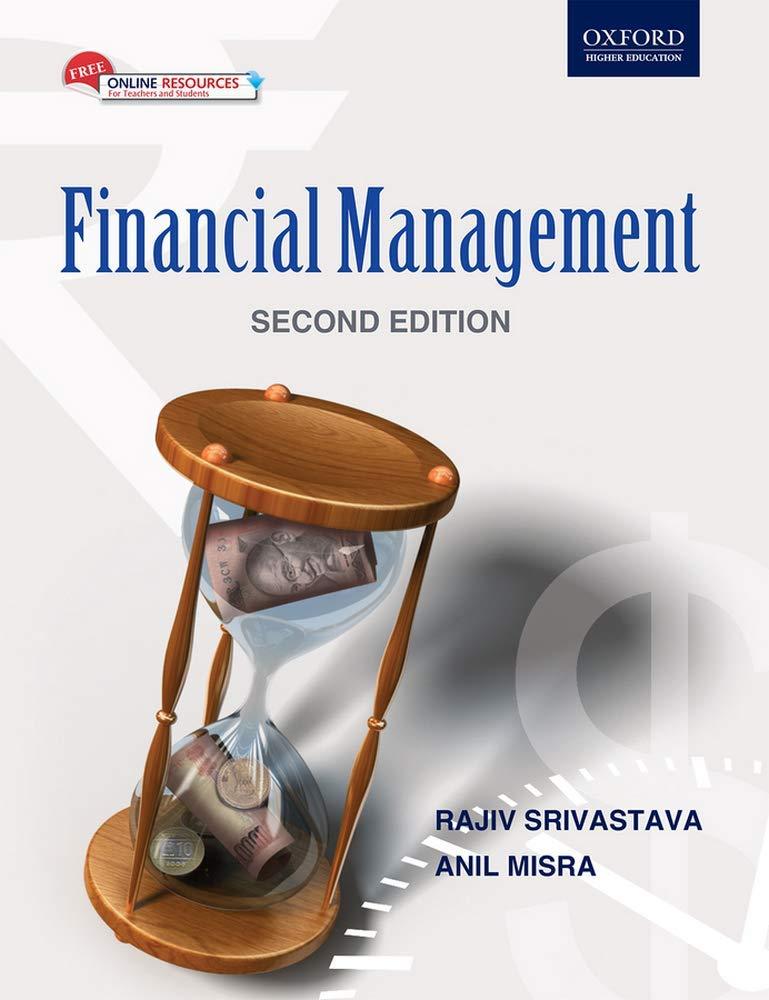Question
Case 37 Space-Age Materials, Inc. Financial Analysis and Forecasting Directed QUESTIONS 1. To begin, consider the percentage of sales formula used to determine external funds
Case 37
Space-Age Materials, Inc. Financial Analysis and Forecasting Directed
QUESTIONS 1. To begin, consider the percentage of sales formula used to determine external funds needed.
External Required assets EFN = (A/S)DS Spontaneous Increase in funds = increase in increase in retained needed liabilities (L/S)DS earnings MS1(1 d). Here, A/S = Assets/Sales = required dollar increase in assets per $1 increase in sales L/S = Spontaneous liabilities/Sales = spontaneously generated financing per $1 increase in sales S1 = Total sales projected for next year (S0 = last years sales) DS = Change in sales = S1 S0 M = Profit margin d = Dividend payout ratio Use this equation to calculate Space-Ages EFN for 1993
2. Now, use the proportional growth (percentage of sales) method to forecast the firms finan-cial statements and EFN for 1993. (Hint: Table 3 has been provided to speed up your work.) Compare the EFN obtained here with that obtained from the percentage of sales formula given in Question 1. Why are the results different?
4. Assume that you are now at the retreat, discussing the forecast with Space-Ages senior executives. The vice president for manufacturing informs you that fixed assets were actually being operated at only 80 percent of capacity in 1992. What effect would this have on your projected external capital requirement for 1993? In answering this question, disregard any financing feedback effects and answer the question by modifying the 1st pass columns of Table 3, but explain how you could go on to reach a balanced solution. Also, in answering this and the next question, assume that depreciation expenses remain constant as a percent-age of sales.
5. In the 80 percent of capacity utilization scenario, excess funds will be generated. Suppose one of the senior executives asked you, as the finance representative, what you would rec-ommend doing with the money. How would you answer? If you are using the Lotus model, how could it be modified to handle EFN surpluses?
7. In general, what impacts do a firms dividend policy, profitability, and capital intensity have on its financing requirements? (Again, if you are using the Lotus model, you could do a sen-sitivity analysis wherein you change certain input data and then observe the effect on EFN. It would be relatively easy to change the input data section to use a payout ratio rather than dividends per share in the event that management wanted to see the relationship between the payout and EFN. To change the profit margin, it would be necessary to change some of the income statement data. This would, of course, depart from the assumption that the 1993 ratios will be the same as 1992 ratios.)
8. The percentage of sales method has been used to forecast the firms financial statements. Sup-pose one of the senior executives asked you what assumptions are implied when one uses the percentage of sales method. That is, under what circumstances would the percentage of sales method produce a valid, as opposed to an incorrect, forecast? How would you answer?
9. What are some other methods that could be used to forecast the asset-and-liability balances and, thus, the forecasted financial requirements? If the senior executives asked you to incor-porate these procedures into your analysis, how would you do it, how long would it take, and what additional data would you require?
10. The case states that Space-Ages optimal capital structure calls for 20 percent long-term debt and 80 percent common equity. However, according to the 1992 balance sheet, the firms capitalization ratio is Long-term debt/Total permanent capital = $12,570,000/($12,570,000 + $17,490,000 + 11,310,000) = 0.304 = 30.4 percent, and its total-debt-to-total-assets ratio is $15,540,000/$44,340,000 = 35.1 percent. Do these figures indicate that the capital structure is seriously out of balance, that the company is using far too much debt, and that you should modify the mix of debt and equity used in the forecasts? (Hint: Think about whether the optimal capital structure should be stated in book value or market value terms.)
Step by Step Solution
There are 3 Steps involved in it
Step: 1

Get Instant Access to Expert-Tailored Solutions
See step-by-step solutions with expert insights and AI powered tools for academic success
Step: 2

Step: 3

Ace Your Homework with AI
Get the answers you need in no time with our AI-driven, step-by-step assistance
Get Started


